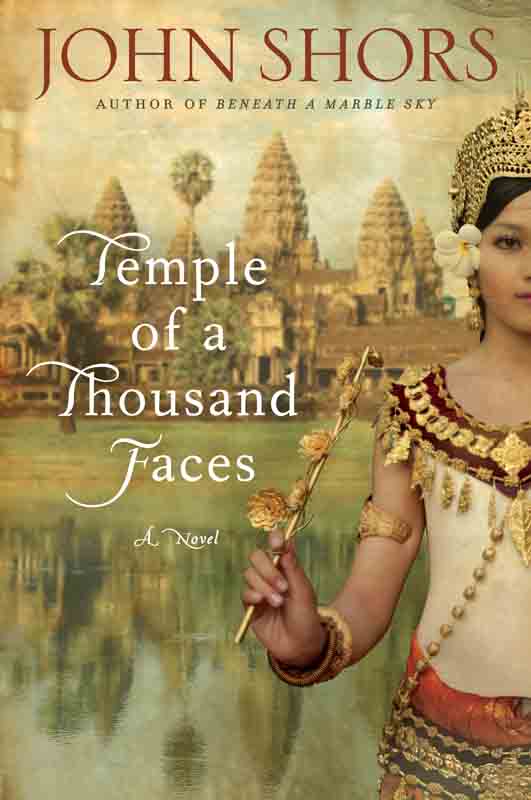For decades, the Powers That Be have flip-flopped on Angkor Wat being one of the Seven Wonders of the World almost as much as the Rock ‘N’ Roll Hall of Fame has on the inclusion of Iggy and The Stooges. But John Shors, author of historical novels about the Taj Mahal and the Great Wall of China, has no doubt as to its value.
Despite having more than two million foreign visitors last year; an Angelina Jolie movie shot among its ruins; its likeness immortalised in a video game and a Texan thrash metal band now bearing its name, Angkor Wat’s appearance in Shors’ new title represents the first time the temple has served as the setting for a novel.
Temple of a Thousand Faces takes places in the 12th century, the height of the Khmer Empire. Because so little is known about this time, Shors had to supplement scant historical documents – such as A Record of Cambodia by 13th century Chinese diplomat Zhou Daguan – with impressions from his trips to Cambodia and his own imagination (the latter he stimulated by surrounding himself with photographs of the temple’s bas reliefs while he wrote).
Central to the main plot is the year 1177, a time when the Angkorean Empire was at the height of its powers. When Cham King Jaya Indravaraman invades the temples, the Khmer ruler Jayavaraman VII and his wife Jayarajadevi are forced into hiding in the surrounding jungle while they raise the necessary army to reclaim their kingdom. The remaining characters, all of whom are fictitious, were inspired by Shors’ interactions with the Cambodian people during his time in the country. One, he tells the reader in an interview at the end of the book, “embodies the characteristics of the women I met in Cambodia: strong, clever, witty, hospitable”.
In addition to the strong prince, his mystical wife and the Cham king, the book follows a Cham warrior who is torn between his loyalty to Indravaraman and his love for a Khmer woman. His conflict adds shades of grey to something that would otherwise be in danger of becoming a black and white melodrama. Also figuring prominently is a fishing and trading family whose struggle illustrates how such wars affected the peasant stock at the time and, more importantly, how they responded.
Reflecting the beauty and splendour of Angkor Wat, Shors’ third-person narration reads like a poet’s description of the jungles, the temples and the hearts of each character. Most all of the characters speak like philosophers. Even Boran, the fisherman, has this to say to his sons: “…war is vile, like a carcass in the water. It corrupts the pure. It maims the innocent… when the fighting starts, when the poor drench the earth with their blood, the rich will stand ready to seize whatever hasn’t been destroyed. That’s the nature of war.” Some things, it seems, never change.
Running throughout are themes of reincarnation, Buddhism and Hinduism, love and death. At more than 500 pages, Temple of a Thousand Faces is as epic as the Bayon statues which bear the face of its protagonist. And given how Shors condenses narration into prose like a Zen scribe, those pages are not thin. Altruistically enough, a portion of the book’s proceeds go towards the Jayavaraman VII Children’s Hospital in Siem Reap.
Temple of a Thousand Faces, by John Shors, is available at Monument Books priced at $15.
